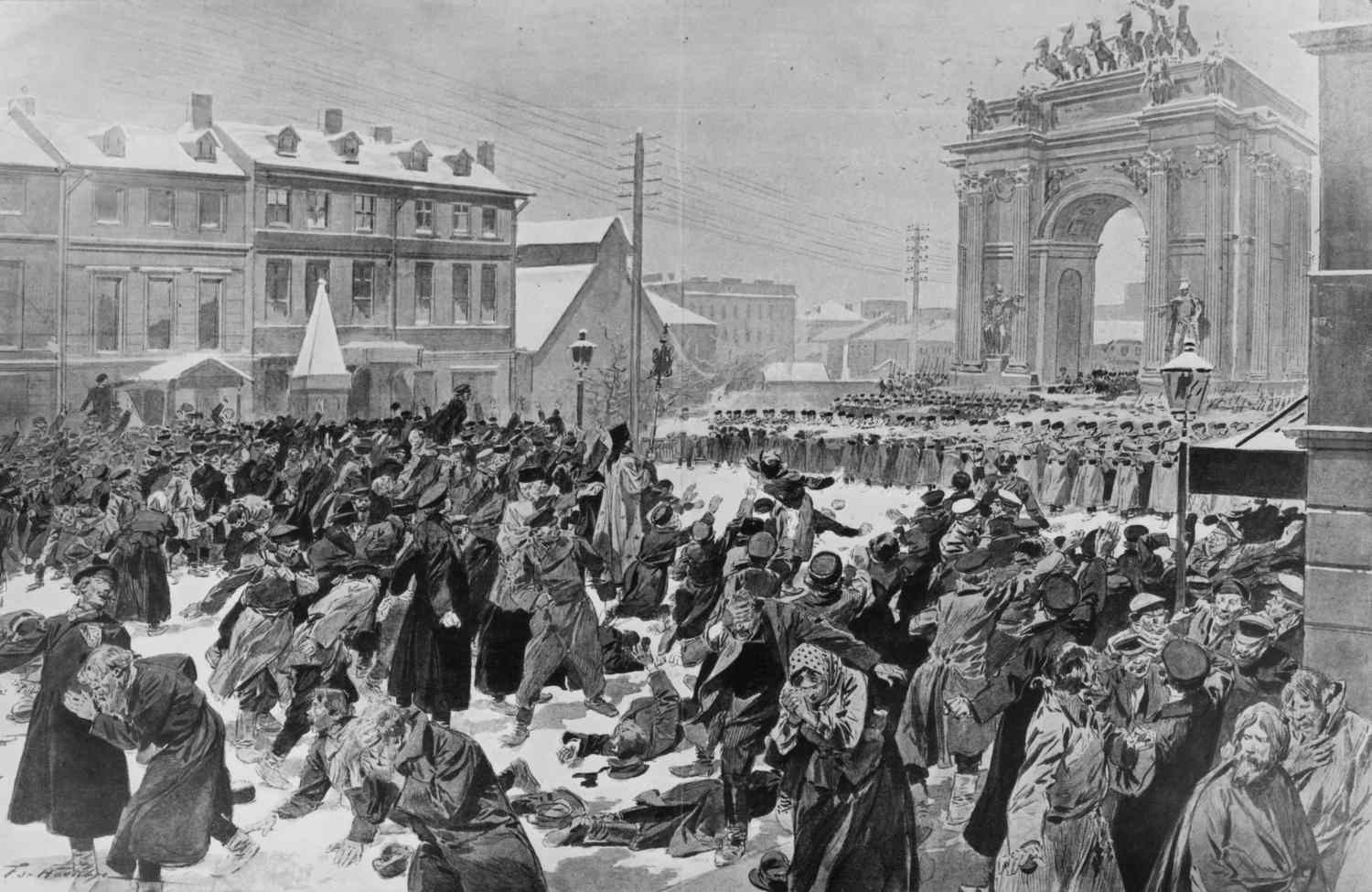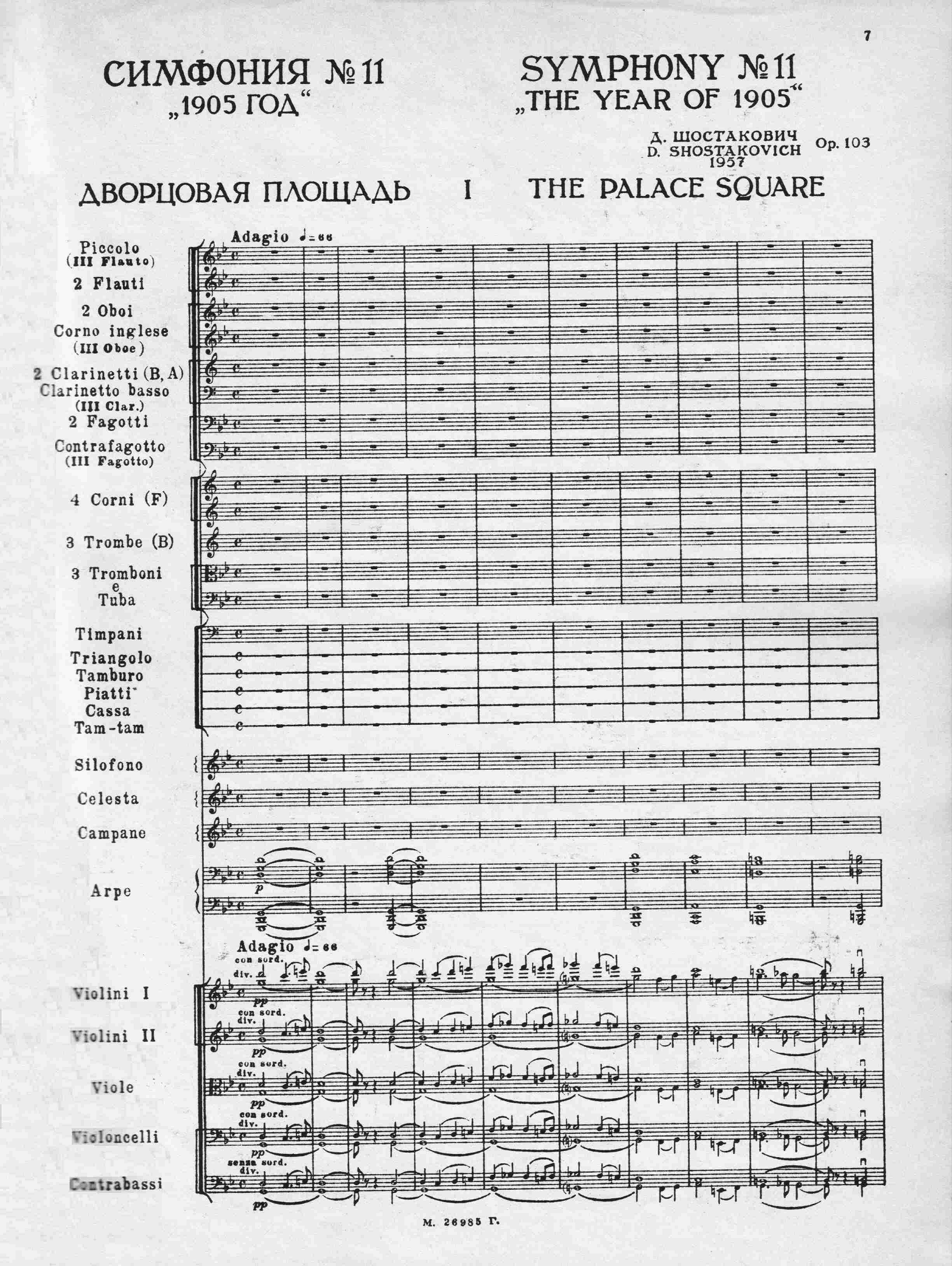How to present — and memorialize — a massacre through music
When tanks were rolling into Hungary from the Soviet Union in 1956, Shostakovich was in the midst of a number of personal woes. His mother had just died, he was already experiencing problems in his second marriage and the fallout from the denouncement after the premiere of his Ninth Symphony had not yet subsided. The tanks on foreign land, however, proved to be enough of a kickstart for Shostakovich to start writing a new symphony; not in time, but close enough to the 50th anniversary of the 1905 revolution.

It had been three years since his last symphony, the Tenth, premiered to more or less little fanfare. The premiere was largely overshadowed by a more important event that happened earlier in the year: the death of Joseph Stalin. The Tenth itself could be interpreted both as Shostakovich having crafted a haunting portrait of Stalin, as well as a deeply personal work, with the famous “DSCH” musical signature motif sticking out of the symphony like a sore thumb.
Three years pass, and in 1957 the Eleventh (subtitled The Year 1905) had been written and approved for premiere. Written in G minor and consisting of four movements, it could almost be described as a programmatic work, where the names of movements, parts of the score and the music itself allude to some extramusical narrative. The narrative in question describes one of the darkest days in Russian history: January 9th, 1905, colloquially and commonly known as “Bloody Sunday”.
The events that took place near Narva Gate in Saint Petersburg on that Sunday is something that was immortalized by Soviet authorities. It was the lit fuse to what would be Russia’s first “real” revolution, or at least an attempt at a concerted effort at a revolution. The march planned and led by popular priest Father Gapon was not associated in any way with the mainstream revolutionary organizations at the time. In fact, the people marching on that day were mostly supportive of Tsar Nicholas II, and the marchers themselves chanted “God Save the Tsar!” as they gathered near the Putilov factory. The factory was the catalyst for the march, as workers there, mostly former serfs, were fired for membership in the “Assembly of the Russian Factory and Mill Workers of the City of St. Petersburg”, a proto-trade union organization at the time. There was nothing indicating that the authorities intended to use any violence towards the marchers, whose sole intent was to march to Palace Square and deliver a petition to the Tsar, which simply called for “improved worker conditions”.

The first movement is an Adagio, subtitled "Palace Square", which sets the scene of the day and the events to come. We are introduced to the strings playing quietly in the higher register, imitating the cold, whistling, biting January winds — calm, yet as if in anticipation of something big. We hear a muted trumpet play an entrance theme of sorts, with the timpani playing one of the quiet themes of the movement, almost resembling the far away military bands beating their drums. The woodwinds join in and play a new theme, and the music develops into the first climax, which portrays the large swaths of marchers preparing to march towards Palace Square. The music feels distant and disjointed, multiple themes clashing with each other, perhaps underscoring the tension and division within the crowd itself. The movement ends with muted trumpets playing the “Warning” theme, foreshadowing what is about to transpire.
The second movement starts attacca (without pause) and is an Allegro ("The 9th of January"). The first section is all about the crowds discontent, with the music (the demands) becoming ever clearer and more decisive. Violins play a stirring, dramatic melody, backed up by the brass and woodwinds. From a narrative point of view, this is the beginning of the march.
The music whirls trying to find a center, until it reaches an early climax and becomes more lockstep, with the brass playing a defined theme for the crowd itself, backed up by the march-like entrance of the snare drum. The following section is more mellow, but still variating on the theme from earlier. Moving forward, the music seems to tell us that the petitioners are loudly announcing their demands. The theme then dies down a little, with the marchers quieting down by the middle of the movement, and a new theme is heard. This theme, played in the woodwinds, is a stark contrast to the boisterous beginning of the movement, introducing us to a deep, eerie calm. It’s as if we are seeing a mirage of the police line in the distance. The timpani plays the theme from the previous movement, and we hear the “Warning” theme again.
The next section begins with a snare drum roll, and is a pounding march-fugue. This fugue is played in the strings and is relentless in its switching back-and-forth between registers. The brass joins in, now being a stand-in for the police. The strings play in a higher register, as if trying to run away. The brass and percussion are now in lockstep, the strings playing higher and higher, almost trying to break out of the score, but are then brought down by powerful brass and percussion hits, containing and catching them. All of this leads to the entire orchestra playing a sequence of cluster chords, crescendoing into an evil-like march, where it becomes obvious what we are witnessing — a massacre. The strings scream out in pain as the timpani plays the theme from earlier, now clearly resembling the military bands joining in to brutalize the crowd. With one last shriek, the strings stop playing, and it’s only the percussion we hear, until they halt as well.
Everything stands still. The strings play the same quiet wind theme from the first movement. It’s as though hundreds of voices have been silenced by the quick, violent, ruthless action. The “Warning” theme is heard again, as if telling the crowd “I warned you”. The end of the movement is a mix of the themes from earlier, but now those themes feel heavier and more tragic, backed up by the bell-like sounds of the celeste. Right at the end, we hear the timpani playing what we now can call the “Police” theme, withering in the distance, coming away from their “victory” over the petitioners. The event described in the symphony left at least 200 dead and over 6000 were arrested.
The second movement of Symphony No. 11 (Toronto Symphony Orchestra)
The third movement is a requiem ("Memory Eternal") and a lament for those murdered in 1905. It is largely based on the song "Вы жертвою пали" (“You fell as victims”), considered a funeral song for fallen revolutionaries. After a brief pizzicato introduction by the strings, the cellos start playing this tragic theme. The music develops and starts variating itself away from the original theme, with the violins and violas joining in. They are shortly interrupted by the brass and percussion playing funeral procession-like chords. The music continues to swell, with the strings and bassoons playing back-and-forth. We then reach the climax of the movement, with the strings in full swing, beautifully, in unison, commemorating the dead. They are then joined by the full force of the orchestra. The movement is full of obvious sadness and rage over the tragic events of that day. After the climax, the cellos play the theme again, underscored by other stringed instruments, and the movement quiets down and dies away.

The fourth movement ("Tocsin") begins energetically with the brass playing a 12-note theme from the Ukrainian revolutionary song "Шалійте!" (“Rage, Tyrants!”). The movement quotes two other songs, namely "Varshavyanka" (“Whirlwind of danger”), and “Ogonki” (“Sparks”).
The “tocsin” («набат» in Russian) is a type of alarm sounded by bells that signifies the marking of an important event or a warning of an impending danger, such as an enemy advancing on a city or an incoming natural disaster. The movement stands in stark contrast to the previous three, as it reads almost like an epilogue full of defiance and revolutionary fervor. The music playing the aforementioned revolutionary themes almost scream out in saying: “Thank you for laying the foundation for our freedom. We will never forget your sacrifice”.
The music of the movement itself is always driving and moving, with the strings, brass, woodwinds, percussion playing interchangeably, variating on the themes of the songs. The entire first section of the movement is one large climax, you can never catch your breath while listening to it. This is Shostakovich at the peak of his compositional abilities, now unrestricted by the programmatic nature of the piece itself.
Eventually, the music does come to the end of the first section, where the music swells and drives forward, until a percussion hit morphs into the strings theme from the beginning of the first movement, backed up by a lamenting, but now different theme played by the cor anglais, joined by different woodwinds. This is the last time the music clearly plays in remembrance of lives lost. This theme is noticeably different from the funeral march-like music we hear in the third movement.
The theme ends, however, and we enter the last driving section of the entire symphony. The percussion and the woodwinds play a stirring theme, the brass playing the “Warning” theme from earlier. The strings join in and variate on the theme, until joined by the full force of the orchestra in a march, with the bells now playing the tocsin. This is played until the very end, perhaps signifying a literal warning to future generations about the sacrifices made in the name of revolution and underlining the importance of remembrance of those sacrifices. The symphony ends with the bell ringing out one last time.

Although one could describe the piece as being a film score without the film, it might as well be argued that the music can be applied to any other historical context where the question of revolution, national or economic in nature, is front and center. However, one also cannot divorce the content of the music from the original intention of the composer: to present us the terrible events that led to the 1905 revolution in the form of the most elementary cultural components of the era: songs, laments, et cetera. What stems from this is a very simple and beautiful conclusion: fabrics of society are shaped by the cultural codes that surround us, and that was certainly not limited to the beginning of the XX century, where songs and their melodies not only changed hearts and minds, but through that, also changed the course of history itself. History lives in memory, and Shostakovich made sure that memory could be preserved for generations to come.
You can find the performance of the symphony in its entirety here, performed by the BBC National Orchestra of Wales and conducted by Thomas Søndergård at the 2013 Proms.
